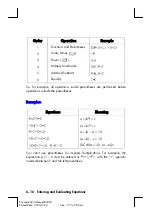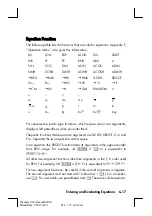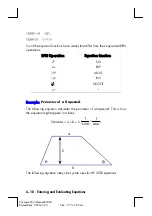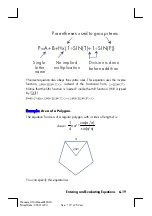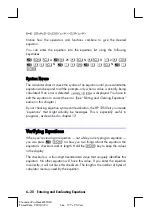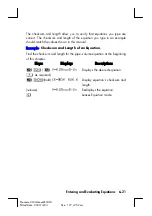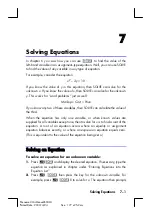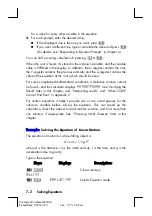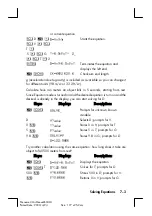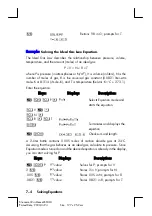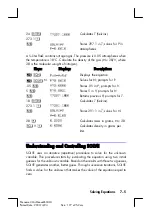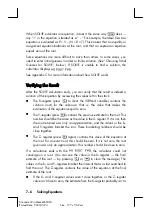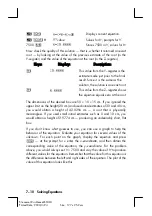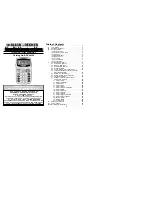
Solving
Equations
7–7
File name 32sii-Manual-E-0424
Printed Date : 2003/4/24 Size : 17.7 x 25.2 cm
root.
If the X– and Y–register values
are
close together, and the Z–register
value
is
close to zero, the estimate from the X–register may be an
approximation to a root.
Interrupting a SOLVE Calculation
To halt a calculation, press
or
f
. The current best estimate of the root
is in the unknown variable; use
{
to view it without disturbing the
stack.
Choosing Initial Guesses for SOLVE
The two initial guesses come from:
The number currently stored in the unknown variable.
The number in the X–register (the display).
These sources are used for guesses
whether you enter guesses or not
. If you
enter only one guess and store it in the variable, the second guess will be the
same value since the display also holds the number you just stored in the
variable. (If such is the case, the calculator changes one guess slightly so that
it has two different guesses.)
Entering your own guesses has the following advantages:
By narrowing the range of search, guesses can reduce the time to find a
solution.
If there is more than one mathematical solution, guesses can direct tote
SOLVE procedure to the desired answer or range of answers. For
example, the equation of linear motion
d
= v
0
t +
1
/
2
gt
2
can have two solutions for
t
. You can direct the answer to the only
meaningful one (
t
> 0) by entering appropriate guesses.
T
he example using this equation earlier in this chapter didn't require you


